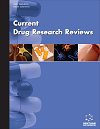
Full text loading...

Hepatocellular carcinoma (HCC), commonly referred to as primary liver cancer, is a malignant neoplasm that originates within the liver. Conventional treatment modalities frequently result in less than satisfactory outcomes, primarily attributed to the intricate physiological and pathological contexts. Compound Kushen Injection (CKI), formulated from the botanicals Sophora flavescens and Atractylodes macrocephala, is employed as a supplementary therapy in the treatment of advanced-stage malignant tumors, including HCC.
Our study combined network pharmacology, bioinformatics, GeneMANIA-based functional association (GMFA), and experimental validation to elucidate CKI's therapeutic targets and mechanisms.
STRING was used to build a protein-protein interaction network, and GO and KEGG analyses were performed with DAVID and ShinyGO on the overlapping targets of CKI and HCC. Hub targets were identified using CytoHubba and their clinical relevance was confirmed with GEPIA2. GMFA and TIMER assessed the functions of key hub genes. The findings were further verified through significant KEGG analysis, molecular docking, and experimental validation.
10 hub targets were identified for CKI against HCC and analyzed for their impact on HCC patient survival and gene expression. GMFA confirmed four key hub genes, and TIMER assessed the correlation between SRC expression and immune infiltration. Significant KEGG analysis highlighted SRC's role in cell proliferation and migration through the MMP/EGFR-PI3K/AKT pathway. Molecular docking showed interactions between SRC and desmethylanhydroicaritin or resokaempferol. Experiments in HepG2 cells confirmed CKI's inhibitory effect on tumor cells.
CKI’s anti-HCC effects may be exerted by regulating SRC via active compounds desmethylanhydroicaritin and resokaempferol.